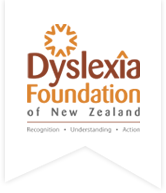
In the classroom, DFNZ's key focus is on improving the dyslexic student's experience and achievements.
Fundamental to this is the provision of NCEA Special Assessment Conditions (SACs), such as reader or writer assistance, computer use, or extra time, for students with learning differences sitting NCEA level exams; and the provision of similar accommodations for those in the earlier, formative years as they move through the education system.
If a child has a learning difference, a school has a legislative obligation to notice and adjust the classroom teaching to accommodate this. Thus SACs are a critical tool to meet these legal obligations, creating a pathway for accommodations from year 1. From the outset, students with learning differences must be identified and supported with accommodations that align to this pathway, creating seamless progress towards NCEA exams.
The DFNZ 'Plus 20' initiative is aimed at lifting the numbers of students receiving NCEA SACs by more than 20% year on year. DFNZ is working with Ministry of Education and NZQA to raise awareness of SAC requirements, the benefits of this to all, and the obligations of school partners to make it happen. SACs are a system wide lever of change for the Government's Inclusive Education agenda and school performance objectives. SACs are core to the role and responsibilities of boards of trustees and principals, and SAC support and activation is now part of RTLB contracts and funding criteria. Most critically, there is a direct correlation between provision of SACs and NCEA success.
In secondary schools, SACs are a simple scorecard showing whether the school is delivering on the Government’s Inclusive Education agenda and to what extent, based on the number of applications a school has made for its students. Schools already au fait with SAC applications and the regular practice of accommodating student needs are seeing benefits both in NCEA results and in student engagement.
For a primary school, provision of similar types of accommodations is equally important. The SAC review signaled the widening of the SAC model to earlier years, with MoE saying it will work with RTLBs, NZQA, and schools to make better use of the National Standards achievement data to identify students who may require SACs in the future, transferring information about students as they move through school and particularly as they leave year 8 and transition to secondary school. This means primary schools will have to invest increased time and resource into identifying and supporting students and ensuring base-line accommodations are aligned with the secondary school process.
Central to provision of accommodations is understanding the concept of fairness and equity. Equity in education means doing the right thing for each individual – one size does not fit all. This personalized approach lies at the heart of the National Curriculum and Inclusive Education. Where there is disparity between an individual's intellectual capacity and their reading abilities, cognitive processing speed and comprehension, accommodations ensure fairness and equity. The types of accommodations provided by SACs are supported by a wealth of neurological science and research, including fMRI mapping at Yale University, which shows that dyslexics receive and retrieve information in a different part of the brain to neurotypical, word-based thinkers. In simple terms – learning differences rob a student of time, accommodations give it back.
Education is also the best preventative against the dark side of learning difference – youth offending. Neurodisabilities and/or learning differences such as dyslexia are hugely over-represented in both the youth courts and the prison population. In New Zealand, an estimated 65-70% of offenders that come before the Youth Court are not formally engaged within the education system. The teenage years can be the breakpoint for dyslexics who struggle at school. The effectiveness of inclusive learning, accommodations and interventions will determine whether these youth break through to harness the creative strengths that dyslexia can bring or break down and act out.
So what can schools and teachers do? At both primary and secondary school level, simple changes make a big difference. These include noticing and adjusting classroom teaching, and offering accommodations in subject areas. And looking out for ‘red flags’ in learning and literacy in order to refer students to SENCos, RTLBs and RTLits as appropriate. For all teachers, DFNZ’s 4D resources provide a comprehensive resource of simple classroom changes which fit with the expectations of the National Curriculum. This includes more than 20 simple things teachers can do to create a positive learning environment, from reviewing seating layouts through to use of new technology.
The 'Plus 20' initiative builds on key recommendations from the NZQA and Ministry of Education's 2014 review of SACs in NCEA. These included a greater focus on school based evidence rather than an independent expert report, and an enlarged role for RTLBs. The review also signaled the widening of the SAC model to earlier years. Overall, the SAC review has made clear that SACs are now a key performance indicator in the education sector. Click here to see the roles that key stakeholders play on the SAC pathway.
The learning journey
Getting it right for dyslexic students in the classroom is not rocket science. It's about simple changes to notice and adjust the teaching. And simple changes to create a positive learning environment. The diagram below outlines the optimum learning journey for those with learning differences:
Quick Links
All school stakeholders have a key role to play in lifting SAC numbers. Click here to see who does what
Find out more...
How your secondary school performs – 2016 SAC data
Find out more...
How your secondary school performs – 2017 SAC data
Find out more...
MoE Special Assessment Conditions Review Update
Find out more...
Know your child’s legal rights in the classroom
Find out more...
New findings on teacher knowledge and attitudes towards dyslexia in NZ secondary schools
Find out more...
New inclusive education resources from Ministry of Education, including guides dyslexia, inclusive classrooms and more
Find out more...
Inclusive education advocates.
Find out more...





































